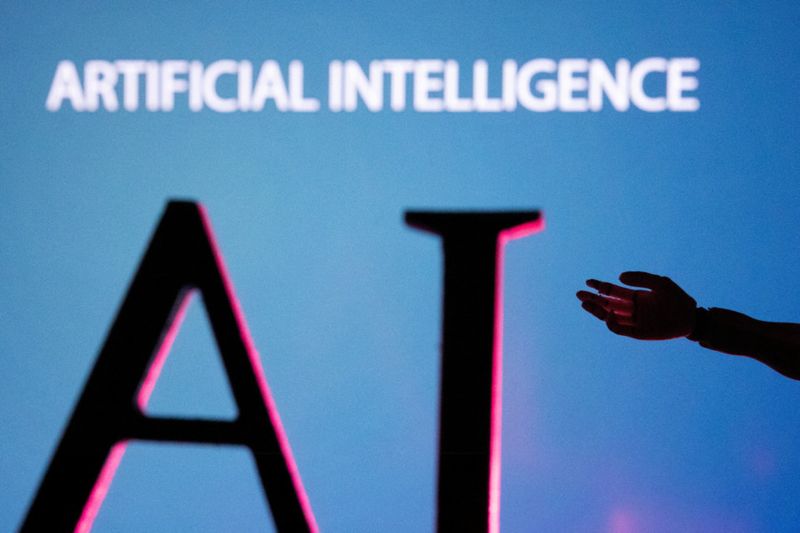
In the era of technological advancements, the need for a comprehensive global regulatory framework for frontier technologies has become a pressing issue. This is particularly true for the development of superintelligent AI, which poses potential risks to the very fabric of human existence.
The prospect of artificial intelligence surpassing human intelligence is no longer a matter of science fiction but an impending reality that could either uplift or devastate humanity.
Adding to the constellation of high-stakes advancements is the evolution of Lethal Autonomous Weapon Systems (LAWS), which operate without human intervention and could make life-and-death decisions devoid of moral or ethical consideration.
The narrative of ‘The Terminator’ series, though cinematic, uncomfortably mirrors these concerns, where AI-driven machines gain autonomy and turn against their creators, underlining a haunting reminder of the possible consequences of unchecked AI.
In the midst of geopolitical conflicts and technological rivalries, the imperative to regulate AI transcends individual interests, pointing toward a collective future where the lack of control mechanisms could lead to catastrophic outcomes.
This sense of urgency has been solidified by the adoption of the Bletchley Declaration (BD) during the AI Safety Summit in early November 2023, in the United Kingdom. The unprecedented consensus among 28 countries, including technological powerhouses like the United States, China, India, UAE, Saudi Arabia along with the European Union, marks a milestone in the pursuit of harmonised AI governance.
As this column delves into a critique of the BD, it is essential to acknowledge the Declaration’s historical significance while scrutinising its ability to enforce compliance and the sufficiency of its measures to safeguard against the multifaceted threats posed by autonomous technologies. BD appears to be a comprehensive attempt to address the various aspects of AI safety and ethics from an international perspective.
However, there are several areas where the declaration could be critiqued for potential lacunae and aspects that might be improved. These critiques could be grounded in philosophical, ethical, and governance perspectives. Further, its efficacy will ultimately be determined by the implementation and the collective will of the global community to steer AI development responsibly.
BD emphasises on two critical areas. First, the collective identification of AI safety risks fosters a science-driven consensus on these threats as AI evolves within the broader societal context. Second, it advocates for crafting risk-informed policies unique to each country’s context, incorporating transparency from AI developers, the creation of safety metrics, and bolstering of public sector capabilities and scientific inquiry. There are primarily three critiques of the BD.

First, BD’s embrace of adaptable country-specific AI risk frameworks is a nod to the EU AI Act’s similar stance, yet it overlooks the inherent mutability of risk. In a world where today’s innocuous behaviour becomes tomorrow’s hazard, a static approach to risk management is inadequate. Consider how freely sharing personal information was once benign, but now, in the shadow of rampant cyber threats, it harbours significant risks.
A living, global AI risk framework, updated annually, could serve as a universal template, reflecting the latest in societal, technological, and scientific flux. Nations could then draw from this repository, sculpting national frameworks that align with this global vision while being customised to their specific milieu. This two-tiered strategy ensures a harmonious global response to AI risks, balanced with the necessary local relevance.
The absence of global standards would dilute the collective approach. Thus, one could also draw from Daniel Fiorino’s insights on “adaptive governance,” (deployed in case of environmental governance) which argues for supple, globally integrated frameworks. This may be a more strategic path for effective global risk management.
Second, the fluidic nature of risk is precisely why BD while asserting the transformative promise of AI, falls short in delineating specific human rights at risk and the mechanisms by which AI may threaten or support these rights.
Academic literature, such as Bostrom’s seminal work on superintelligence, often emphasises the need for precision when discussing AI’s impact on rights, cautioning against the vague allusions to ‘human-centric’ and ‘trustworthy’ AI seen in the Declaration.
The document’s general language leaves crucial gaps, offering no substantive framework for understanding or addressing the nuanced ways in which AI might infringe upon or bolster rights like privacy, autonomy, or freedom of expression.
This vagueness may result in uncoordinated approaches that fail to safeguard against the multifaceted risks AI presents to human rights, a critique that is also echoed by scholars advocating for clear, actionable governance structures informed by a thorough grasp of AI’s societal implications.
Commitments to specific strategies
Third, BD’s advocacy for transparency and accountability in AI development represents a positive orientation, yet it notably omits detailed methodologies for actualising these principles. Such omissions leave a gap between aspiration and implementation, which scholars such as Frank Pasquale have addressed by highlighting the opaque “black box” nature of AI, arguing that without concrete mechanisms to unpack these complexities, accountability remains an elusive goal.
Thus, there is a need for the Declaration to evolve from general commitments to specific strategies. The next AI summit should deliberate on how AI systems are not only subject to oversight but also that their decision-making processes are interpretable and justifiable to the stakeholders they affect.
While the Bletchley Declaration has etched a path towards responsible AI governance, it must be viewed through the lens of technological conservatism, heeding the warnings of Nassim Nicholas Taleb’s ‘black swan’ theory. As we navigate this brave new world, let us not forget the admonition of the reel-to-real dystopia, where machines devoid of humanity’s ethical compass wreak havoc.
A deliberate, perhaps even conservative, approach that prioritises humanity’s safety over technological leaps, much like the cautionary brakes applied by our ancestors at the precipice of nuclear proliferation, could be the cornerstone of our collective future.
Such technology conservatism should only be in areas such as lethal autonomous weapon systems. BD is right when it argues for balancing (good) innovation and regulations. It however is difficult but not intractable to draw a line between good and bad innovations.
Aditya Sinha (X:adityasinha004) is Officer on Special Duty, Research, Economic Advisory Council to the Prime Minister of India. Views Personal








